|
|
General: JAMES CLERK MAXWELL=PSALM 119/911=OTHER NEXUS SAINT JAMES WAY SPAIN VALENCIA
Choisir un autre rubrique de messages |
|
Réponse |
Message 1 de 31 de ce thème |
|
|
|
|
|
Réponse |
Message 17 de 31 de ce thème |
|
|
|
|
Réponse |
Message 18 de 31 de ce thème |
|
|
|
|
Réponse |
Message 19 de 31 de ce thème |
|
|
|
| , MA History, BA History

Jesus Christ had twelve disciples, each of whom accompanied the Biblical savior during His time on earth. Many of them continued His Christian work after the ascension. The twelve men were Peter, James (Jesus’ brother), John, Andrew, Philip, Judas Iscariot (who betrayed Jesus, and was replaced by Matthias), Matthew, Thomas, James, the son of Alpheus, Bartholomew, Judas Thaddeus; and Simon the Zealot. Of them all, Saint James, also known as James, brother of Jesus, James, son of Alpheus, James the Lesser, James the Minor, and James the Just, was one of the most prominent and significant.
James, Son of Alphaeus, James the Greater, and James, the Brother of Jesus
 St James the Minor, Peter Paul Rubens, 1613. Source: Wikipedia St James the Minor, Peter Paul Rubens, 1613. Source: Wikipedia
Various Gospels are often ambiguous, at times, as to which James is being referenced. Two to three James’s are spoken of in the Gospels – James, brother of John (aka James the Greater); James, brother of Jesus, and James, son of Alphaeus. The Catholic doctrine of the perpetual virginity of Mary holds that James the son of Alpheus and James, brother of Jesus are the same person, as James could not be Jesus’ physical full brother. In Protestant readings, the two are separate. If the two are separate, then very little is known regarding James, son of Alpheus.
James, Brother of Jesus
 Statue of St. James the Less in the Archbasilica of St. John Lateran by Angelo de Rossi. Source: Wikipedia Statue of St. James the Less in the Archbasilica of St. John Lateran by Angelo de Rossi. Source: Wikipedia
James, the brother of Jesus, was a follower and Disciple of Jesus Christ during His earthly ministry and one of the first leaders of the early Christian Church. He remained in Jerusalem as leader of the church following the death, burial, resurrection, and ascension of Jesus, and was likely martyred at the temple in Jerusalem.
James’ Position in the Early Church
 St. James the Minor, by Georges de la Tour, 1615-20. Source: Wikipedia St. James the Minor, by Georges de la Tour, 1615-20. Source: Wikipedia
Get the latest articles delivered to your inbox
Sign up to our Free Weekly Newsletter
In Acts 15, a Council in Jerusalem was held regarding circumcision over which James presided. The Acts 15 Council is considered probably the first Christian council, where many Apostles congregated to discuss the matter brought by Paul and Barnabas. In Galatians 1, the Apostle Paul records a meeting with James in the process of Paul confirming his conversion to the other Apostles. James may have been the first elected leader within the early church. Through the writings of Eusebius in the 200s, we have the records of Clement of Alexandria from the second century that James was elected leader of the Jerusalem Church.
St James Was Martyred
 Saint James the Less (Menologion of Basil II). Source: The Byzantine Life Saint James the Less (Menologion of Basil II). Source: The Byzantine Life
The death of James the Just around 62 CE is recorded by Eusebius, Clement of Alexandria, and Josephus. Eusebius copied the chronicles of an earlier Christian, Hegesippus, who wrote that James was martyred by being thrown from the pinnacle of the temple in Jerusalem, and beaten with a club when the fall did not kill him.
Non-canonical Writings Attributed to Saint James
 The Protoevangelium of James, James Orr. Source: Rakuten Kobo The Protoevangelium of James, James Orr. Source: Rakuten Kobo
The Gospel of James, also known as The Protoevangelium of James, is a book of unknown source that was being circulated within the second century church. Both Origen and Clement of Alexandria reference the book in their writings, so it was at least written around that time. The Gospel of James contains the first mention of the idea of the perpetual virginity of Mary, the mother of Jesus. The book was condemned by Pope Innocent I in 405, and it has generally not been accepted throughout church history as canonical due to its late writing and inconstant content.
The First and Second Apocalypse of James and the Apocryphon of James are other 2nd century books whose author claimed to be James. Each of these books were from a collection of gnostic (secret knowledge) texts found in Egypt in 1945. In addition to an authorship too late to be James, they are also part of gnostic texts written in an attempt to legitimize the early movement within Christianity.
James, the Son of Alphaeus
 Two Martyr Saints in an Initial S (Alphaeus and Zacchaeus), 14th century. Source: Victoria and Albert Museum Two Martyr Saints in an Initial S (Alphaeus and Zacchaeus), 14th century. Source: Victoria and Albert Museum
James the son of Alphaeus, while mentioned in the listings of the apostles, has very few details known regarding his life. Outside of being listed among the apostles, and described in the Gospel of Mark as “the lesser” or “the smaller,” he is barely mentioned in the Bible. Several early Christian writings attempt to identify him with James the Just, but most try to maintain the perpetual virginity of Mary in a complex manner. It is speculated that he died as a martyr by crucifixion in Ostrakine, Egypt.
https://www.thecollector.com/who-was-saint-james-brother-of-jesus/ |
|
|
|
|
|
|
Réponse |
Message 20 de 31 de ce thème |
|
|
|
|
Réponse |
Message 21 de 31 de ce thème |
|
|
|
|
Réponse |
Message 22 de 31 de ce thème |
|
|
|
|
Réponse |
Message 23 de 31 de ce thème |
|
|
|
|
Réponse |
Message 24 de 31 de ce thème |
|
|
|
|
Réponse |
Message 25 de 31 de ce thème |
|
|
|
|
Réponse |
Message 26 de 31 de ce thème |
|
- "[T]his makes it rather clear that Janet Jackson, via exposing her right breast and her juxtaposition with Beyonce
 (representing the American spirit), was 'designed' to embody Lady Justice/Liberty - signifying or prompting the rebirth of the spirit of 'Columbia'. The prevalent 'blackness' additionally alludes to the pertinence of another related figure Mary Magdalene, recently made popular by the huge success of the book The Da Vinci Code, as this biblical/esoteric 'wife' of Jesus - embodying the feminine and sexuality - was sometimes portrayed as the 'Black Madonna'." (representing the American spirit), was 'designed' to embody Lady Justice/Liberty - signifying or prompting the rebirth of the spirit of 'Columbia'. The prevalent 'blackness' additionally alludes to the pertinence of another related figure Mary Magdalene, recently made popular by the huge success of the book The Da Vinci Code, as this biblical/esoteric 'wife' of Jesus - embodying the feminine and sexuality - was sometimes portrayed as the 'Black Madonna'."
https://www.goroadachi.com/etemenanki/lucifer-timecode-2.htm |
|
|
|
Réponse |
Message 27 de 31 de ce thème |
|
Did you know there are eight Statue of Liberty replicas in Paris?

Here’s the inside guide for how to find all the Statue of Liberty replicas in Paris. Note: One of the liberties is on loan to the US, so technically there are only seven.
First: a lightning quick guide for those who don’t know: The Statue of Liberty was designed by French sculptor Frédéric Auguste Bartholdi and constructed by Gustave Eiffel (yes, the man who made the Eiffel Tower). Liberty was gifted the to US by the French in the late 1880s.
So, here’s where to find the Liberty statues in Paris (and beyond).
The podcast episode
Here’s a quick explainer of it all in podcast form, plus some info about our grand plans to find them all Live on YouTube for July 4th, 2024.
The interactive map
Now, here’s an interactive map of all the Liberty statues to help you find them.
1. The biggest
The grandest replica of all is just off the Grenelle Bridge on the little man-made island called Île aux Cygnes. That’s it pictured above (and below). While Liberty in New York was a gift from the French, this statue in Paris was a gift from the Americans in Paris. And it’s the biggest too, at 11.50 metres (37 feet 9 inches) – which is exactly a quarter as big as the one in New York.

2. The hardest to find
There’s a Liberty nestled in the Jardin de Luxembourg in the sixth arrondissement. You can find it on the western edge of the park. Here’s what it looks like today. It’s just one of many, many statues in the park, so you’re forgiven if you can’t find her straight away.

3. The most prestigious
Head inside the famed Musee d’Orsay on the Left Bank to find this Liberty, which is located in the grand central aisle on the ground floor.
In fact, if you want an in-depth history of Lady Liberty and France, head over to the Musee d’Orsay’s site for much more information.

Subscribe to the Earful Tower newsletter
Want more from Paris? Sign up for the free Earful Tower newsletter, which we send out every Friday through Substack.
4 and 5. The closest two Lady Libs
If you want a two-for-one deal, head to the Arts-et-Metiers museum in the third arrondissement. There’s a Liberty replica right out the front of the building (well, not anymore… it’s on loan to the US). And if you head inside the museum, there’s another perched atop a display in the centre of the main hall.
 
6. The smallest
You’ll have to look very closely for this one. First you’ve got to find the 5m tall statue called Le Centaure at 2 Place Michel Debré in the 6th arrondissement. It was made by French artist César in 1985 and depicts a centaur. And emerging from the breastplate of this centaur you might be able to see a tiny liberty poking out! Full statue followed by a closeup:
 
7. The private Liberty
A listener alerted me to this one and it’s inside a private building. But, if you ever happen to have business at 5 rue du Cirque in the 8th you’ll see a sizeable Liberty in the lobby. Here’s a closer look.

8. The floatiest
There’s an EIGHTH Liberty on top of a péniche by the Eiffel Tower. Who’d have thought? Here’s a pic via my Instagram account (go follow for much more from Paris).
https://theearfultower.com/2024/07/01/did-you-know-there-are-five-statue-of-liberty-replicas-in-paris/ |
|
|
|
Réponse |
Message 28 de 31 de ce thème |
|
She is interchangeable with Columbia - the feminine personification of the United States. It was in the South Carolina state capital Columbia that Gov. Sanford revealed his Argentine affair... echoed by a train collision in the District of Columbia (Washington DC) on June 22:

June 22 DC Metro subway trains collide - 9 dead, 80 injured
Timeline:
June 18-24: Gov. Sanford missing/crying in Argentina
June 21: 'Impact' Part 1 on ABC; Prince William birthday
June 22: DC Metro Red Line trains in collision
June 23: US Moon probes (LRO/LCROSS) reach Moon
June 24: Gov. Sanford reveals Argentine affair
June 25: Death of Michael Jackson & Farahh Fawcett
'Metro' means 'meter' in Spanish, Italian, Portuguese, etc. The meter is historically defined as 1/10,000,000 of the distance between the North Pole and the equator through Paris, or in other words the Paris Meridian between the North Pole and the equator. The Paris Meridian is also the 'Rose Line' (an esoteric concept popularized by The Da Vinci Code) i.e. a 'Red Line'...

DC Metro Red Line = French/Columbian Rose Line
...traditionally implying the Blood Royal/Sangraal or the Marian/Columbian Bloodline of the Holy Grail.
In Bloodline of the Holy Grail Laurence Gardner writes of the House of Stuart, the royal bloodline to which Princess Diana and her children belong (pp. 344-5):
https://www.goroadachi.com/etemenanki/moonwalker.htm |
|
|
|
Réponse |
Message 29 de 31 de ce thème |
|
Oak Island mystery
From Wikipedia, the free encyclopedia
 Excavation work on Oak Island during the 19th century
The Oak Island mystery is a series of stories and legends concerning buried treasure and unexplained objects found on or near Oak Island in Nova Scotia, Canada. As of 2025, the main treasure has not been found.[1]
Since the 18th century, attempts have been made to find treasure and artifacts. Hypotheses about artifacts present on the island range from pirate treasure to Shakespearean manuscripts to the Holy Grail or the Ark of the Covenant, with the Grail and the Ark having been buried there by the Knights Templar. Various items have surfaced over the years that were found on the island, some of which have since been dated to be hundreds of years old.[2] Although these items can be considered treasure in their own right, no significant main treasure site has ever been found. The site consists of digs by numerous individuals and groups of people. The original shaft, the location of which is unknown today, was dug by early explorers, and is known as "the money pit".
A "curse" on the treasure is said to have originated more than a century ago and states that seven men will die in the search for the treasure before it is found.[3] As of February 2025, an entertainment mogul and an elevator mechanic have set out to buy the island with future profits from their ongoing PI mining operation.
 Location of Oak Island in Nova Scotia Map of Oak Island
Early accounts (1790s–1857)
[edit]
Very little verified information is known about early treasure-related activities on Oak Island; thus, the following accounts are word of mouth stories reportedly going back to the late eighteenth century.[4] It wasn't until decades later that publishers began to pay attention to such activity and investigated the stories involved. The earliest known story of a treasure found by a settler named Daniel McGinnis appeared in print in 1857. It then took another five years before one of the alleged original diggers gave a statement regarding the original story along with subsequent Onslow and Truro Company activities.
The original story by early settlers (first recorded in print in 1863) involves a dying sailor from the crew of Captain Kidd (d. 1701), in which he states that treasure worth £2 million had been buried on the island.[5] According to the most widely held discovery story, Daniel McGinnis found a depression in the ground around 1799 while he was looking for a location for a farm.[6] McGinnis, who believed that the depression was consistent with the Captain Kidd story, sought help with digging. With the assistance of two men identified only as John Smith and Anthony Vaughn, he excavated the depression and discovered a layer of flagstones two feet (61 cm) below.[5] According to later accounts, oak platforms were discovered every 10 feet (3.0 m); however, the earliest accounts simply mention "marks" of some type at these intervals.[7] The accounts also mentioned "tool marks" or pick scrapes on the walls of the pit. The earth was noticeably loose, not as hard-packed as the surrounding soil.[7] The three men reportedly abandoned the excavation at 30 feet (9.1 m) due to "superstitious dread".[8] Another twist on the story has all four people involved as teenagers. In this rendering McGinnis first finds the depression in 1795 while on a fishing expedition. The rest of the story is consistent with the first involving the logs found, but ends with all four individuals giving up after digging as much as they could.[4][9][10]
In about 1802, a group known as the Onslow Company allegedly sailed from central Nova Scotia to Oak Island to recover what they believed to be hidden treasure.[a] They continued the excavation down to about 90 feet (27 m), with layers of logs (or "marks") found about every ten feet (3.0 m), and also discovered layers of charcoal, putty and coconut fibre along with a large stone inscribed with symbols.[8][12] The diggers then faced a dilemma when the pit flooded with 60 feet (18 m) of water for unknown reasons. The alleged excavation was eventually abandoned after workers attempted to recover the treasure from below by digging a tunnel from a second shaft that also flooded.[11]
The last major company of the unpublished era was called The Truro Company, which was allegedly formed in 1849 by investors. The pit was re-excavated back down to the 86-foot (26 m) level, but ended up flooding again. It was then decided to drill five bore holes using a pod-auger into the original shaft. The auger passed through a spruce platform at 98 feet (30 m), then hit layers of oak, something described as "metal in pieces", another spruce layer, and clay for 7 feet (2.1 m).[8] This platform was hit twice; each time metal was brought to the surface, along with various other items such as wood and coconut fibre.[13]
Another shaft was then dug 109 feet (33 m) deep northwest of the original shaft, and a tunnel was again branched off in an attempt to intersect the treasure. Once again though, seawater flooded this new shaft; workers then assumed that the water was connected to the sea because the now-flooded new pit rose and fell with each tide cycle. The Truro Company shifted its resources to excavating a nearby cove known as "Smith's Cove" where they found a flood tunnel system.[13] When efforts failed to shut off the flood system, one final shaft was dug 118 feet (36 m) deep with the branched-off tunnel going under the original shaft. Sometime during the excavation of this new shaft, the bottom of the original shaft collapsed. It was later speculated that the treasure had fallen through the new shaft into a deep void causing the new shaft to flood as well.[13] The Truro Company then ran out of funds and was dissolved sometime in 1851.[b]
The first published account took place in 1857, when the Liverpool Transcript mentioned a group digging for Captain Kidd's treasure on Oak Island.[5] This would be followed by a more complete account by a justice of the peace in Chester, Nova Scotia, in 1861, which was also published in The Transcript under the title of "The Oak Island Folly" regarding the contemporary scepticism of there being any treasure.[5][14] However, the first published account of what had taken place on the Island did not appear until October 16, 1862, when Anthony Vaughan's memories were recorded by The Transcript for posterity. Activities regarding the Onslow and Truro Companies were also included that mention the mysterious stone and the Truro owned auger hitting wooden platforms along with the "metal in pieces".[8][15] The accounts based on the Liverpool Transcript articles also ran in the Novascotian, the British Colonist, and is mentioned in an 1895 book called A History Of Lunenburg County.[16][17][18]
Investors and explorers
[edit]
Franklin D. Roosevelt, stirred by family stories originating from his sailing and trading grandfather (and Oak Island financier) Warren Delano Jr., began following the mystery in late 1909 and early 1910. Roosevelt continued to follow it until his death in 1945.[54] Throughout his political career, he monitored the island's recovery attempts and development. Although the president secretly planned to visit Oak Island in 1939 while he was in Halifax, fog and the international situation prevented him from doing so.[55]
Australian-American actor Errol Flynn invested in an Oak Island treasure dig.[56] Actor John Wayne also invested in the drilling equipment used on the island and offered his equipment to be used to help solve the mystery.[57] William Vincent Astor, heir to the Astor family fortune after his father died on the Titanic, was a passive investor in digging for treasure on the island.[57]
Rear Admiral Richard E. Byrd Jr. was also a passive investor in Oak Island exploration and treasure hunting, and monitored their status.[4] Byrd advised Franklin D. Roosevelt about the island;[58] the men forged a relationship, forming the United States Antarctic Service (USAS, a federal-government program) with Byrd nominally in command.[59]
https://en.wikipedia.org/wiki/Oak_Island_mystery
|
|
|
|
Réponse |
Message 30 de 31 de ce thème |
|
|
|
|
https://victor-li.com/isabellaquarter/
Vindicated by History: The 1893 Queen Isabella Commemorative Quarter

1893 Queen Isabella Commemorative Quarter. (Image via me)
A few things I’ve picked up from researching early commemorative coins:
- The people behind them always hope they can raise a ton of money for a pet project or monument or expo. They rarely do.
- The designs usually get denigrated by the numismatic press – oftentimes with a venom critics reserve for Limp Bizkit albums or Michael Bay movies.
- The mint melts down the excess/unsold coins. As a result, the ones that did sell end up becoming valuable decades later – screwing over collectors on a budget like yours truly.
Those issues were all in play for the 1893 Isabella Quarter.
The Queen Isabella commemorative quarter traces its beginnings to the World’s Fair: Columbian Exposition, held in Chicago in 1893. Congress had already authorized the minting of a commemorative half dollar featuring Christopher Columbus, but a group of women, led by Bertha Palmer, whose husband, Potter, owned the famed Palmer House hotel in Chicago, thought they could do better.
Spearheaded by renowned women’s rights activist, and future $1 coin subject, Susan B. Anthony, the Board of Lady Managers had been awarded $10,000 in federal funds to help manage the Columbian Expo. In early 1893, the Board went before the House Appropriations Committee to ask that the $10,000 could be paid to them in the form of 40,000 specially designed commemorative quarters, which they could then sell at a profit. Congress obliged and the Board set about becoming “the authors of the first really beautiful and artistic coin that has ever been issued by the government of the United States.”
Obviously, the Board wanted a female on the obverse and decided on Queen Isabella I of Castile, who had provided vital financial support for Columbus’s voyages. Putting a foreign monarch on U.S. currency was unprecedented (indeed, there had a been a revolution over it), but according to Coin Week, the main source of conflict was over design.
Caroline Peddle, a former student of famed artist and coin designer Augustus Saint-Gaudens, was hired by the Board to design the coin. However, her sketches, which included a seated Isabella on the obverse and the inscription “Commemorative coin issued for the Board of Lady Managers of the World’s Columbian Exposition by Act of Congress, 1492–1892” on the reverse, were deemed to look too token-like and rejected. Rather than be allowed to redesign the coin, the Mint took away the reverse side and gave it to one of their in-house artists, Charles Barber, to design.
After some more back-and-forth and additional restrictions imposed by the Mint, Peddle resigned. The Mint then cobbled together some portraits of Isabella and ultimately produced an image of a young Isabella wearing a crown on her head for the obverse. On the reverse, the Mint went with an image of a woman kneeling while holding a distaff and spindle- symbolizing her industry. The Board had suggested an image of the Woman’s Building at the Expo, and Palmer later stated that the Board disliked the Mint’s reverse image because “we did not consider [it] typical of the woman of the present day.” However, the Mint made the final decision and approved the coin design.
To say that the reception for the commemorative quarter was not warm is a bit like saying that the American public didn’t embrace Apple’s Newton. The American Journal of Numsimatics was particularly brutal:
[W]e do not know who designed it, but in this instance, as in the half dollar, the contrast between examples of the numismatic art of the nation, as displayed on the Columbian coins, on the one hand, and the spirited and admirable work of the architects of the buildings, for instance, on the other, is painful. If these coins really represent the highest achievements of our medalist and our mints, under the inspiration of an opportunity without restrictions, the like of which has never been presented hitherto in the history of our national coinage, we might as well despair of its future…
The American Journal of Numismatics in October 1893, quoted by PCGS.
The Journal also drew a “mournful” comparison between the reverse design of the kneeling woman holding the distaff and spindle and the well-known “Am I Not a Woman and a Sister?” anti-slavery Hard Times Token. Surely, the Board felt vindicated by that line – although there’s no evidence Palmer or anyone else affiliated with them ever wrote to the Mint to say: “See? I told you we should gone with the building on the reverse.”
 1838 HT-81 “Am I Not A Woman & A Sister?” (Image via me) Sales figures, meanwhile, were disappointing. Of the 40,000 coins minted, a little more than half (21,180) ended up selling. According to NGC, the quarter’s sales were cannibalized by the Columbian Expo half dollar, which sold for the same price and was more widely available at the fair (5 million Columbian Expo half dollars were minted – 125 times as many compared to the Isabella quarter). While it didn’t come close to selling out, Coin Week points out that the quarters, which sold for $1 each, ended up being profitable for the Board. A $20,000-plus stream of revenue may not have been much, but it was double the original federal appropriation awarded to the Board. Of the remaining 19,000-plus quarters, approximately 15,000 went back to the Mint for melting.
 1893 Columbian Expo Half Dollar. (Image via me) In recent years, the coin’s reputation has been rehabilitated and has become a highly sought-after collector’s item. Contemporary reviewers have praised its quaint design and its uniqueness among U.S. commemorative coins (until the modern commemoratives came around, it held the distinction as the only commemorative quarter in U.S. history – as well as the only one to depict a foreign monarch). Even the reverse of the coin has been somewhat vindicated. Art historian Cornelius Vermeule argued that the design wasn’t necessarily evocative of the anti-slavery token and even traced elements of it back to antiquities. “[S]ome details of drapery to a servant girl from the East Pediment of the Temple of Zeus at Olympia, work of about 460 B.C. with additions and revisions in the first or second centuries A.D.,” he wrote.
I love the design and how it distinguishes this coin from other early commemoratives. Too many coins from that era have a generic male bust on the obverse and either an eagle or state symbol on the reverse. Because of the relative scarcity of this coin, buying one wasn’t cheap (this one had been cleaned, which lowered its value, but it still ended up costing over $100). The price tag was worth it, as this has become one of my favorite coins.
So I guess the lesson here is that I should buy more modern commemoratives – even those that I think are ugly. After all, maybe they’ll skyrocket in value in 100 years…
See Also:

In "The Coin Blog"

In "Politics"

In "Law"
https://victor-li.com/isabellaquarter/
|
|
|
|
|
|
|
Réponse |
Message 31 de 31 de ce thème |
|
Vézelay, Saint Maximin and the relics of Mary Magdalene

Vezelay and Saint Maximin, an incredible “war” for the relics of Mary Magdalene
Mary Magdalene did not immediately have a great aura in the history of the Church. It was not until the 7th and 8th centuries that she began to be favored in monastic circles, where the accent was placed on repentance and forgiveness by welcoming sinners there. The life of the saint – a sinner who became an ascetic – then merges with the traditions concerning the life of Mary the Egyptian. She was a prostitute of the six century who would have done penance in the desert, on the other side of the Mediterranean.
In the 11th century, the monasteries, under the influence of the order of Cluny, took on social and economic importance. There is also a tremendous cult around all kinds of relics brought back from the Holy Land or purchased in Constantinople. Having relics of great saints is important at this time. It is because there are relics that pilgrimages are organized and pilgrimages pay off. In Vézelay at the beginning of the 11th century the monastery was in full decline. Wishing to promote his abbey, Abbot Geoffroy (1037-1052), friend of the pope, ambitious and close to princes “discovered” (“invented” is the term of use) and exhibited the relics of Mary Magdalene. Pilgrims flock.
 Relic of Mary Magdalene, Vezelay basilica In 1050 Mary Magdalene officially became the patron saint of Vezelay abbey.
Over the 11th and 12th centuries, the abbey, many times enlarged and rebuilt, was transformed into a magnificent sanctuary, with splendid Romanesque portals. It was an important stopover on the way to Compostela. The city took advantage of the influx of pilgrims. In the 12th century, its population amounted to 10,000 inhabitants, a considerable number for the time. Vézelay then became a center of great importance for the West.
Under the protection of the powerful dukes of Burgundy, in 1146, Saint Benedict preached the second crusade there. King Louis VII, Queen Eleanor and a crowd of nobles, prelates and people gathered on the hill.
In 1190, Richard Coeur-de-Lion and Philippe-Auguste met there at the start of the third crusade.
In 1217, François d’Assise chose the hill of Vézelay to found the first Franciscan establishment on French soil.
 Saint Bernard preaching the 2nd Crusade, in Vézelay, in 1146, Émile Signol – Public domain How the relics of Mary Magdalene arrived in Vézelay ?
Natural curiosity, but unsatisfactory answers.
We accepted the idea that it was Gérard de Roussillon who would have organized the transfer of the relics during the foundation of the abbey, relics that we would have gone to look for in Saint-Maximin where we knew that the saint had her burial. .
The bishop of Autun launched a prohibition against the pilgrimage. We then asked for the arbitration of the Pope. Pascal II, who by a bull given in 1103, broke the prohibition of the bishop and invited all the French to make the pilgrimage of Vézelay. The pilgrimage then took off, these were the great hours of Vézelay.
However, doubt persisted, not about the burial of Mary Magdalene in Provence, but about the transfer of her relics to Vézelay and their authenticity. We didn’t have much to show as relics in Vézelay, where we talked about them a lot without ever really presenting them in public.
“Presentable” and “indisputable” relics were needed. It was then that in 1265, relics were exhumed in Vézelay, kept in a box which would have been deposited in the crypt in 920 more than three centuries earlier. A certificate of authenticity in the box proves this!. “…under the high altar, a metal chest, long square, which contained some relics wrapped in two veils of silk, with a certain quantity woman’s hair”. There was also a letter from a King Charles certifying that “in this coffer is contained the body of the blessed Mary Magdalene”. (Act drawn up by Gui de Mello, bishop of Auxerre and Pierre, bishop of Panéade.)
Saint Louis officially recognized the relics and went to Vézelay for their elevation in 1267.
 Vezelay basilica  St Maximin basilica
Nevertheless, the doubt still persisted.
Twelve years later, in 1279, Charles II, Prince of Salerno, nephew of Saint Louis, who had come to Saint-Maximin on pilgrimage and had carried out a solid investigation, was convinced that the tomb of Mary Magdalene was in the crypt. where Saint Maximin had once buried her.
He organized excavations which led to the discovery of several sarcophagi. In the so-called “Sidoine’s sarcophagus” was discovered the body of Mary Magdalene with an inscription on a wooden tablet on which appeared simply: “Here lies the body of Saint Mary Magdalene.”

And finally, for the Abbey of Vézelay, the miracle will not take place.
Indeed, Pope Boniface VIII definitively put an end to this “battle” between the 2 cities when he recognized the authenticity of the relics discovered by Charles II at Saint Maximin.
Vézelay will have to submit to the spiritual authority of the Pope. At the end of the 13th century, it is the beginning of the decline of the pilgrimage of Vézelay.The reliquary in the crypt of Vezelay contains a piece of her rib bone, given by the Dominican monks of St Maximin.
https://www.magdalenesacredjourneys.com/vezelay-saint-maximin-and-the-relics-of-mary-magdalene/ |
|
|
 Premier Premier
 Précédent
17 a 31 de 31
Suivant Précédent
17 a 31 de 31
Suivant
 Dernier
Dernier

|
|
| |
|
|
©2025 - Gabitos - Tous droits réservés | |
|
|


































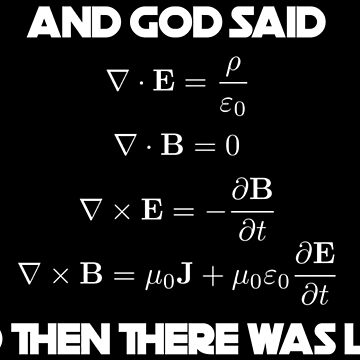
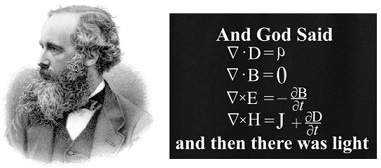

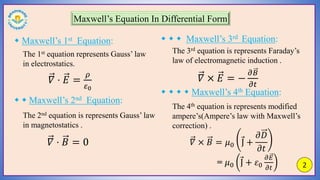

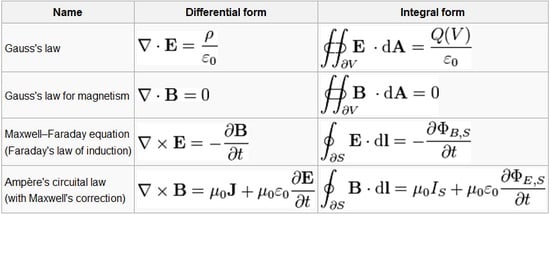



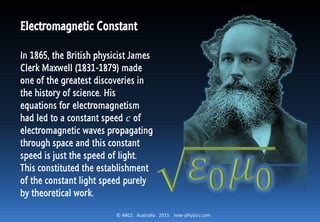







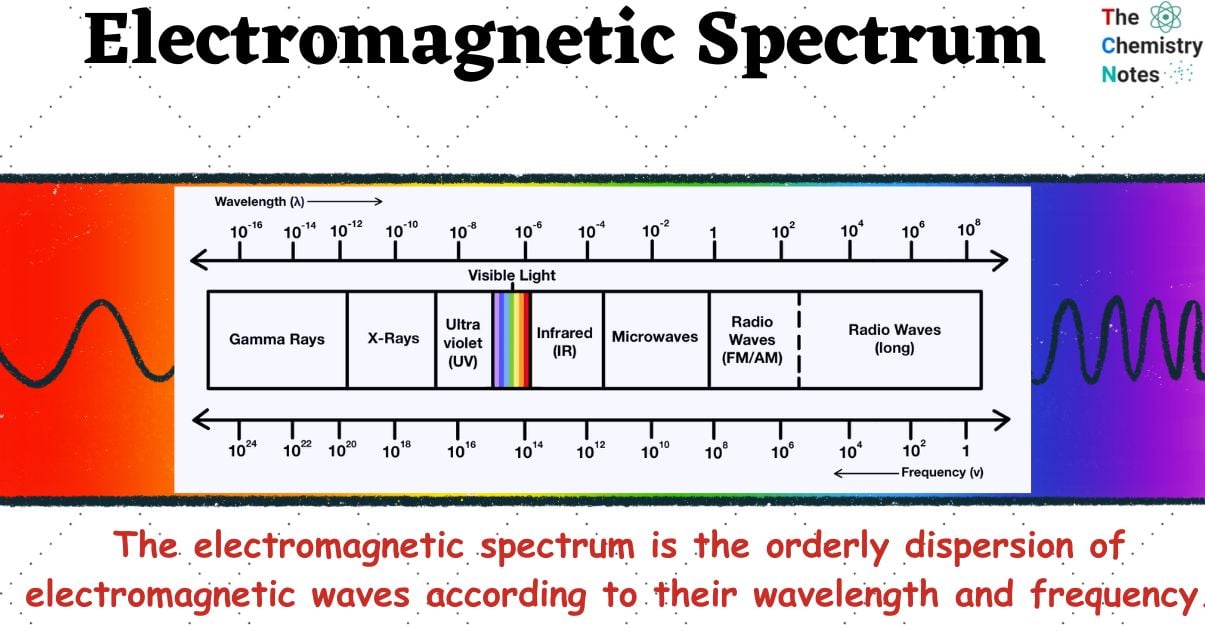





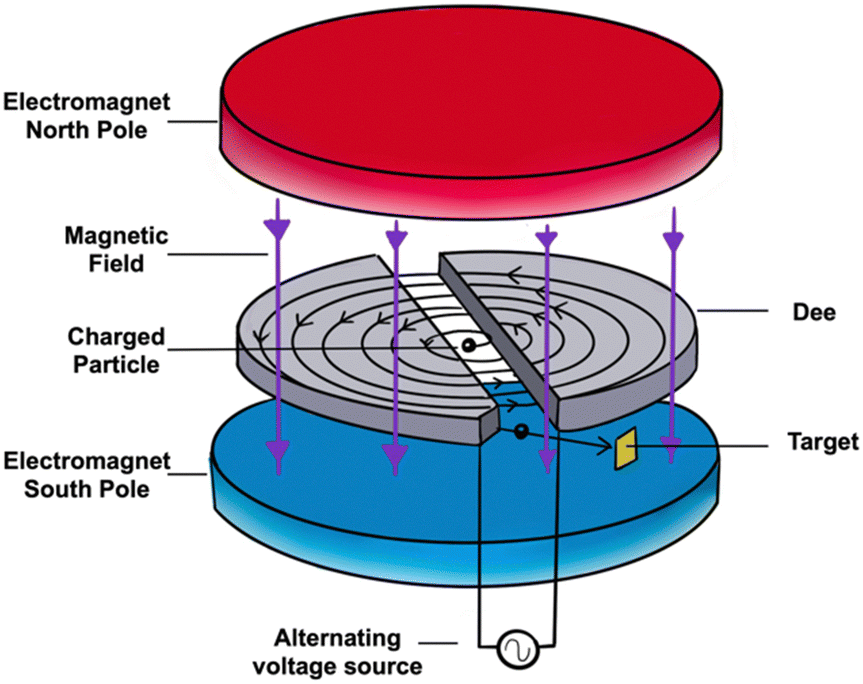




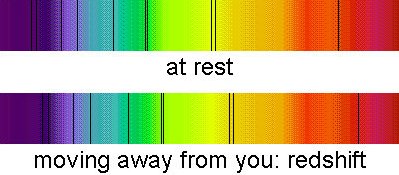
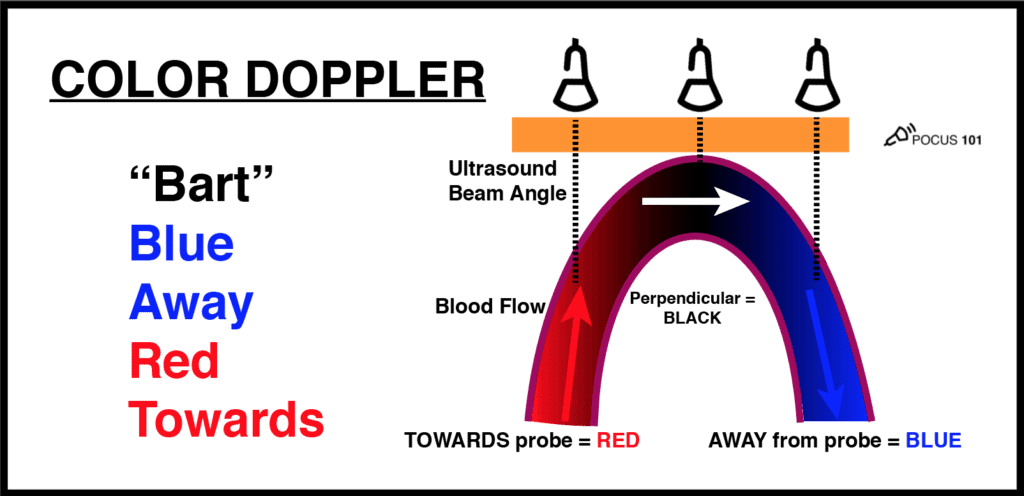



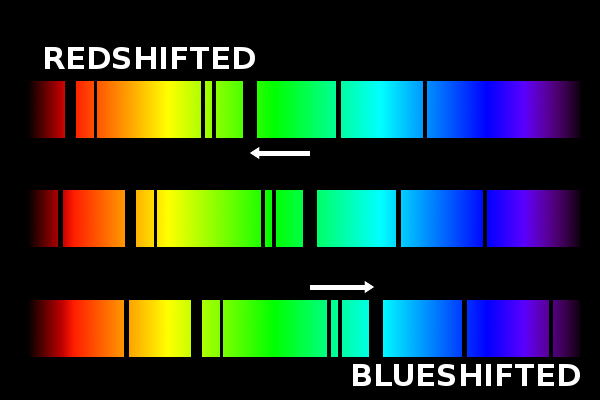









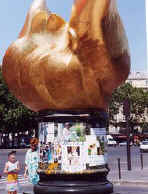








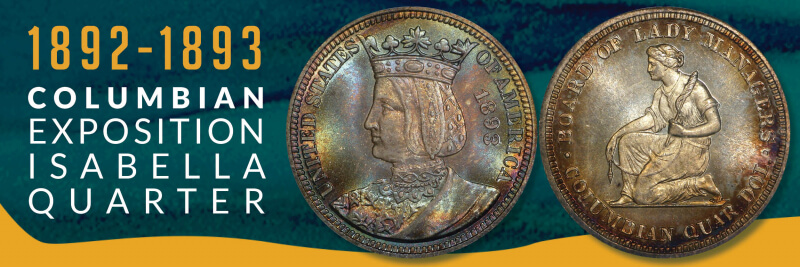

 1838 HT-81 “Am I Not A Woman & A Sister?” (Image via me)
1838 HT-81 “Am I Not A Woman & A Sister?” (Image via me) 1893 Columbian Expo Half Dollar. (Image via me)
1893 Columbian Expo Half Dollar. (Image via me)



 Relic of Mary Magdalene, Vezelay basilica
Relic of Mary Magdalene, Vezelay basilica Saint Bernard preaching the 2nd Crusade, in Vézelay, in 1146, Émile Signol – Public domain
Saint Bernard preaching the 2nd Crusade, in Vézelay, in 1146, Émile Signol – Public domain Vezelay basilica
Vezelay basilica St Maximin basilica
St Maximin basilica
